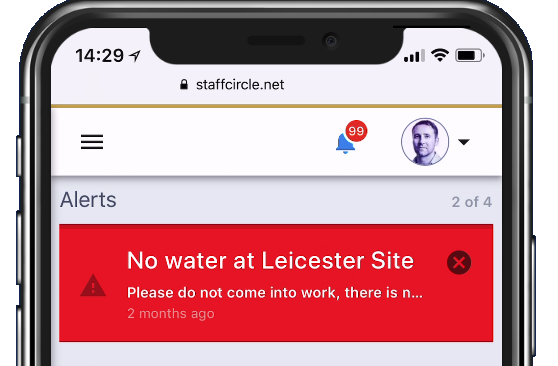It will come as no surprise to anyone working within the industry to hear the UK’s construction sector is facing a significant skills shortage. The industry has an ageing workforce, with many facing retirement within the next decade, while the number of apprentices coming into the sector is insufficient to meet anticipated demand in the coming years.
- 20% of all construction vacancies are considered “persistent and hard to fill because employers cannot recruit the right skills (CITB)
- The industry is sitting on a retirement timebomb: 22% of the workforce is over 50, and 15% are in their 60s (CITB)
- Young people often leave employers for more stable work or more competitive rates of pay
- 20% of early leavers cite problems with their employer as a reason for leaving the sector (CITB)
- Over a quarter of employers consider early leavers to be a “major problem” (CITB)
One of the best ways to ensure your company maintains a satisfied workforce with high retention rates is to maintain high levels of employee engagement. A Gallup State of the Workforce report highlights the link between engagement and retention:
“Employees who are engaged are more likely to stay with their organisation, reducing overall turnover and the costs associated with it. They feel a stronger bond to their organisation’s mission and purpose, making them more effective brand ambassadors.”
The high costs of construction staff churn
If construction companies are to thrive in the coming years, they must continue to recruit, train and develop talent. As the market for skilled staff gets increasingly competitive, the costs associated with retaining talented individuals will rise. 62% of employers already agree that early leavers are a problem for their business and a third of employers says it is costly in both time and money.
People leaving the industry increases the workload of existing team members resulting in increased pressure, mounting stress and lower productivity. Add this to the average costs of recruiting a new trainee (£575 per role), or the associated costs of replacing a staff member, estimated to be over £30k (HR Review), and the cost of losing a staff member start to become quite stark.

Five practical tips for developing engaged construction employees
1. Leadership commitment
The CITB recommends that whatever workplace initiatives are introduced, they are done so with explicit support and engagement from senior management. Senior management must champion working arrangements that support employees in their roles, such as training and mentoring schemes so that staff feel engaged and enjoy coming in to work.
Make sure your executives are committed to change and that they make themselves visible to the workforce.
2. Implement regular feedback meetings
One of the most effective ways to maintain an engaged workforce is through the effective use of performance management and feedback. Many construction companies utilise annual appraisals, but there is increasing evidence that manager/employee feedback loops should be conducted on a more frequent basis.
Encouraging managers to diarise frequent “catch-ups” with their team members, on a monthly or quarterly basis, can help to keep employees engaged. Switching to a quarterly “check-in” has been shown to reduce the number of employees who quit by 30% at some large employers.
3. Keep staff regularly informed
One of the most frequently cited causes of disengaged staff is the lack of communication from senior leadership teams which can result in employees feeling disconnected from their company vision and direction. A recent study from Tribe Inc found that 84% of non-desk workers believe there is “not enough” information from the top while 72% of communication from their top management is important to them.
Regular team meetings and toolbox talks are a great way of keeping staff up-to-date for day to day, project-related issues but they often fail to make employees feel connected to colleagues outside of their immediate team. Important corporate messages should be delivered to all teams, in the same way, to ensure consistency of message and avoid problems associated with the rumour mill.
4. Utilise digital communication channels
Reaching a group of construction workers who are out on-site has traditionally meant that digital channels such as intranet or email are ineffective. However, developments in technology mean that non-desk workers can now receive precisely the same communications as desk-based workers by using their smartphones.

Solutions such as StaffCircle’s mobile news feed, SMS alerts and push notifications provide all employees with an equal opportunity to read corporate messages and respond in one central location. Senior management can share videos, photos and news updates that keep the entire workforce aware of the major priorities of the business while also allowing line managers to communicate quickly to a dispersed non-desk workforce.
5. Empower your team with clear objectives and key results
A common reason for employees to feel disengaged within their role is that they simply aren’t getting enough feedback and they can’t see where their career is heading. At the same time, one of the big risks for SMEs within the industry is the failure to implement effective distributed leaderships models; most CEOs and MDs at SMEs are “afraid to let go” (CITB) and retained much of the core business planning responsibility.
To build a sustainable business capable of thriving over the long term, SMEs in the sector must think about succession planning and effective delegation of duties. Achieving this requires clear communication from company directors, which outlines the company goals and cascades this down into the teams and through to individual objectives. The Objectives and Key Results (OKR) methodology of objective setting is the ideal framework to implement in such instances.
When individual objectives are linked directly to corporate goals, team members can see clearly how their actions impact the broader goals. OKRs can also be connected to training and development plans, leading to succession plans and growth opportunities for all employees.
Managing a workforce that is disengaged and disconnected carries a significant cost; productivity is lower, staff churn is higher, costs associated with recruitment will continue to rise, and planning for the future is made all the more difficult. The most effective way to combat this is to implement an employee engagement strategy that keeps desk and non-desk based workers connected.





